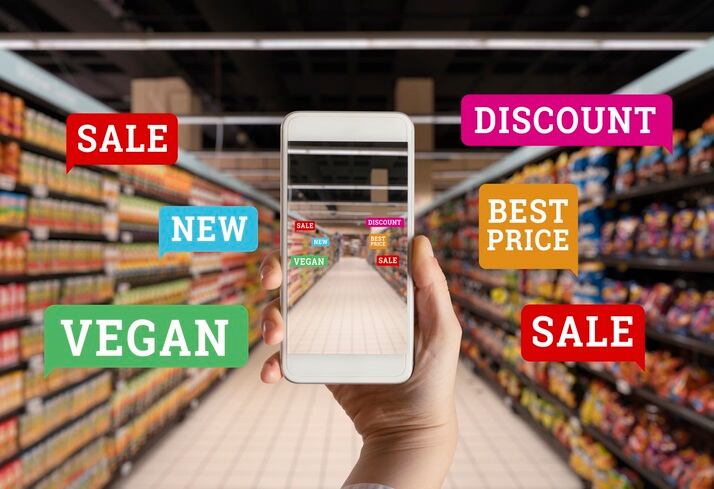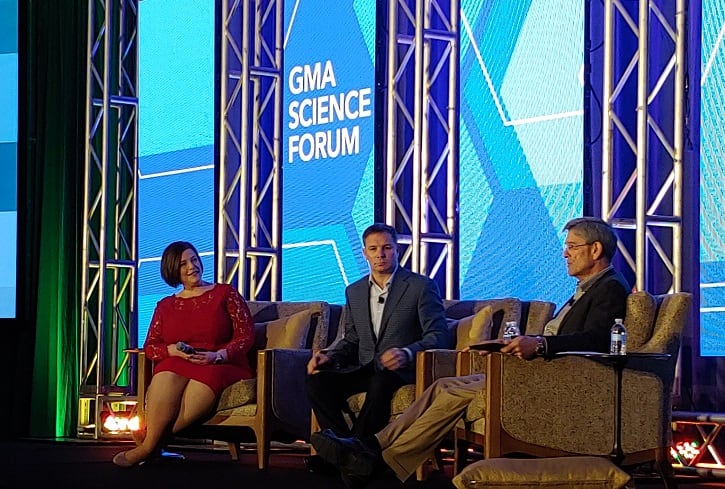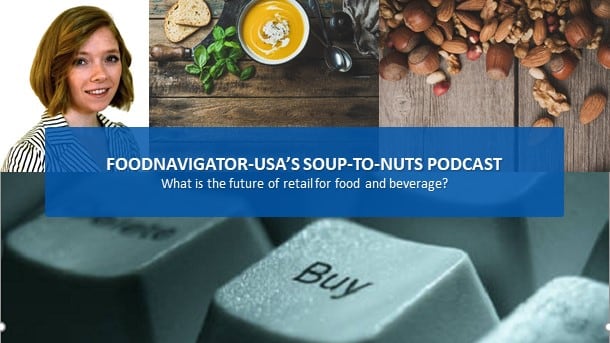“We know that our customers may not be coming into the store as much as they once were, and as retailer nutrition experts, we really still want to be talking with them and giving them information about what is better-for-you on our shelves” to ensure they are making the healthiest choices and to keep them engaged as loyal consumers, said Emily Craft at the Grocery Manufacturers Association’s annual Science Forum in Washington, DC, late last month.
She explained that as omnichannel shopping becomes more prevalent, it is making it easier for consumers to buy goods from a variety of retailers – but given their spending power, retailers have a vested interest in gaining and retaining their loyalty.
“A study done from the Harvard Business School with over 46,000 shoppers a couple of years ago found that on average omnichannel shoppers spend 4% more on every shopping occasion in the store, and 10% more online than single channel shoppers,” making them a key target demographic in the competitive landscape, she said.
In addition, she noted that that customers who use four or more channels to engage with retailers spend on average 9% more. That includes shopping online, using an app or an in-store tablet or another piece of technology.
“So, we like these shoppers and we want to keep these shoppers engaged,” and one way to do that is “present them with good nutrition information even though we might not be seeing them face to face,” she said. “As nutritionists and dietitians our goal is to provide a seamless shopping experience in the store and online, so that they can get the same information they might find if they stopped by our offices.”
Three ways that dietitians are engaging with omnichannel shoppers both in-store and online is by providing digital coupons that can either be found on the retailer or brand website or scanned in store through an app, activating social media through creative campaigns and proving online solutions, such as meal ideas and shopping lists.
One way that Giant is leveraging these strategies is by working with Eventbrite to make it easier for online shoppers to learn about and sign up for classes and events held in stores.
“We also have created a blog for customers so that they can access the nutrition information that we are giving on a monthly basis in our presentations in stores and our samplings,” Craft noted.
In addition, she said, Giant has launched a podcast called Nutrition Made Easy, which leverages clinical nutrition and trend spotters to create excitement about what is store aisles for each season and generate new ideas for recipes and serving food – such as the podcast’s upcoming episode on a healthier happy hour.
And then finally, Craft said, Giant is marrying the power of coupons with consumers’ desire for more information by linking digital coupons to the nutrition information offered online. This can be done through sponsorship or as an extension of the content the dietitians are generating, such as offering a coupon for olive oil to correspond with information about heart health.
Zeroing in on applications
When it comes to using apps to engage with consumers online and in stores, Craft says there are three main areas in which retailers, brands and other stakeholders are developing products.
The first is around nutrition apps, which target consumers with health specific goals, such as weight loss or managing diabetes or hypertension. A closely related second category is apps targeted at customers who have a food allergy or sensitivity or who shop for someone who does, Craft said.
The second category of apps is focused on sustainability and choosing products that are environmentally friendly, said Craft, who added that mainly millennials are using these apps.
And finally, Craft said, consumers are using apps that incentivize them to make healthier choices. This set of apps often offers price discounts or savings for choosing healthier options and are sometimes sponsored through employers or health care plans.
Broadly speaking, the most used apps all include the ability to scan products in store for more information and a tracking element that allows consumers to either see their savings or improvements in their diet over time, she added.
While many apps fall into these three categories, Craft said she sees retailer specific or generated apps as the next frontier because they can bridge consumers online shopping with their trips to stores and by doing so generate higher levels of loyalty.




